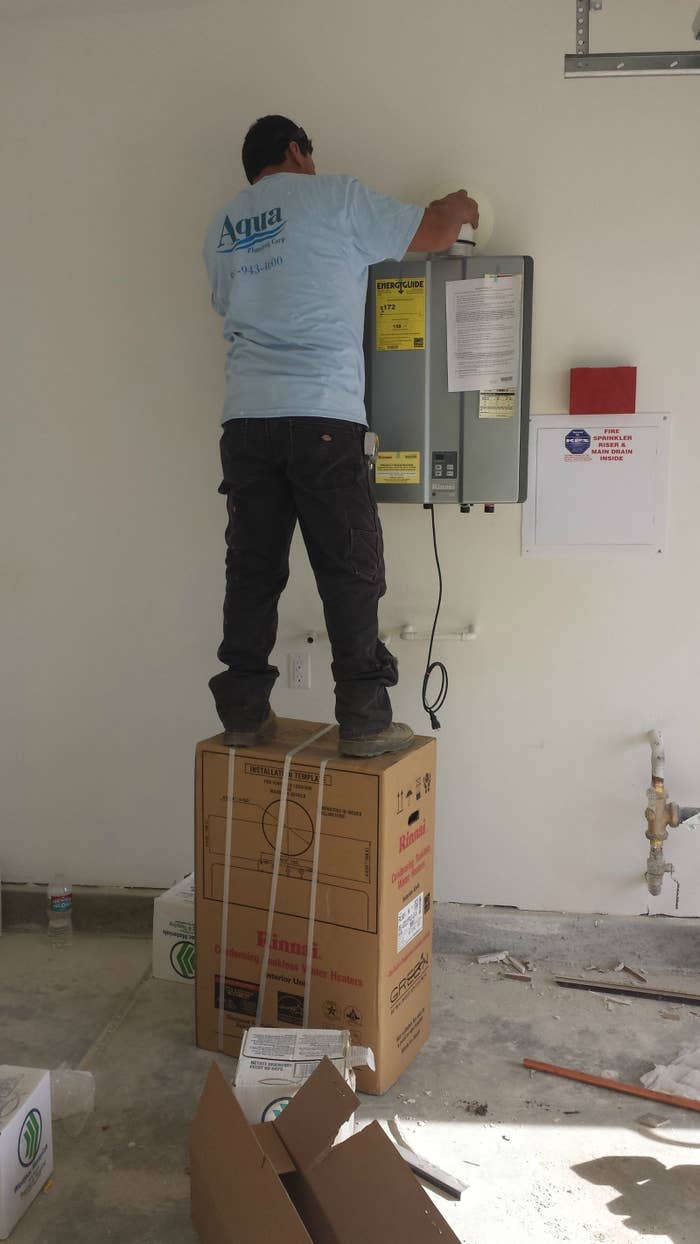A lot of dangerous situations can crop up at work. Like this:

Or this:

Or this:

But, partly because memorizing a legal code is nobody’s idea of fun, few workers are up to speed on what their rights are. Even if a worker has witnessed or experienced a safety violation and wants to report it to to the Occupational Safety and Health Administration (OSHA), figuring out the process of how to do that (without the employer realizing and making life even harder at work) can be so difficult as to discourage reporters entirely.
“It really can get confusing about where you’re supposed to go when you have a violation,” said Nicole Vallestero Keenan of the Fair Work Center in Seattle, an organization that provides legal support to people who are having trouble on the job.
If it were easier to report OSHA violations, more people would probably do it. Which is why the Oakland-based organization Workers Lab decided to pay for an app that will allow them to report problems directly to the appropriate agency.
The app doesn’t have a name yet, but it’s being built by SeeClickFix, a civic tech company based in New Haven, Connecticut that made a name for itself by helping city dwellers report things like graffiti and potholes to local authorities. So far, SeeClickFix has had just shy of 2.5 million complaints filed.
SeeClickFix also makes apps that work as dashboards for government employees to sort through incoming requests, CEO Ben Berkowitz told BuzzFeed News. Engineers will use the same framework to build an app that allows workers to report incidents at work to whatever office they’re supposed to be reported to.
When the new app, which is still in the planning phases, is built, it will work like this: Say you’re working at a restaurant that is withholding wages from its staff. Instead of asking your brother’s girlfriend’s lawyer neighbor about it, you download the app. Based on your location, it will suggest different agencies that deal with your brand of complaint. You’ll answer questions about the nature of the problem, and those answers will then be sent on to a worker center or other agency.
“It could be transferred, in the case of work safety, to a local OSHA division,” Berkowitz said. “If it’s wage theft, it could be a city attorney, or a county attorney, or a state attorney.” If the reviewer thinks your complaint is legitimate, they’ll get in touch and start guiding you through the official complaint process.
Keenan has seen the pitch for the app and says that, compared to other worker advocacy technologies she’s seen, this is the most promising yet. “What I like about SeeClickFix,” she said, “is it makes it really easy to figure out what buckets a violation could be in.”
In addition to filling potholes, SeeClickFix — which raised $1.6 million in July — has also been used to help control water waste during California’s drought and to clean up dangerous drug-related waste. Moving past municipal government, the company has been expanding into new markets, which can be more sensitive. “We’ve started to work with universities,” Berkowitz said. “We just signed on our first housing authority. We partnered with a few commercial landlords. A hospital.”
Privacy is a top priority when it comes to sending and storing information about worker complaints, not in the least because workers who file reports can face termination, or other retaliation. “Some of the information is pretty sensitive,” said Keenan. “You might not want sexual assault reports to go on a public database.”
Berkowitz said building that structure out has been a big job, but not an “unexpected or unsurmountable” one.
If it takes off, the Workers Lab workplace violation app could go well beyond individual workers. For example, enough complaints about a single workplace are made, the Department of Labor could launch an investigation into the employer. Or, if the issue is with compensation rather than safety, it’s possible that reporting could result in a class action lawsuit. Likewise, an app that gives voice to disgruntled workers could prove fertile hunting grounds for labor unions looking to organize unhappy workers.
